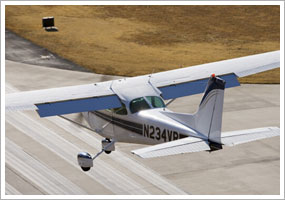 Most student pilots train in aircraft equipped with flaps. In the traffic pattern, the flaps are typically deployed gradually, starting abeam the runway numbers and ending with full deployment on final approach. Many students ask: Why not deploy the flaps all at once?
Most student pilots train in aircraft equipped with flaps. In the traffic pattern, the flaps are typically deployed gradually, starting abeam the runway numbers and ending with full deployment on final approach. Many students ask: Why not deploy the flaps all at once?
"Large flap deflections at one single point in the landing pattern produce large lift changes that require significant pitch and power changes in order to maintain airspeed and descent angle. Consequently, the deflection of flaps at certain points in the landing pattern has definite advantages. Incremental deflection of flaps on downwind, base leg, and final approach allow smaller adjustment of pitch and power compared to extension of full flaps all at one time," explains Chapter 8 of the Airplane Flying Handbook.
"When teaching landings in a Cessna or Piper training aircraft, I have the student use one notch of flaps and trim when abeam the numbers. From here, the remaining flaps are used to adjust the aircraft's descent to the touchdown point. If the pattern is a normal-sized pattern (the turn from base to final will be slightly more than a quarter-mile from the runway), and the headwinds on final are light, the second notch of flaps will be applied when they are needed to keep from landing long. This typically occurs just before turning from base to final. The third and last notch of flaps is applied when the landing is assured."
But don't let that comfortable routine make you complacent. Unusual winds, extending your downwind leg for spacing, or getting instructions from the tower to "make short approach" may call for other techniques (and don't forget to perform some no-flap landings).
During dual sessions of airwork, it will help if you spend some time practicing holding heading and altitude at approach airspeeds while changing flap configurations—full flaps, no flaps, and everything in between—to learn the aircraft's responses and the power-pitch inputs required. With some practice, you'll be ready for whatever kind of landing is called for next!
No comments:
Post a Comment